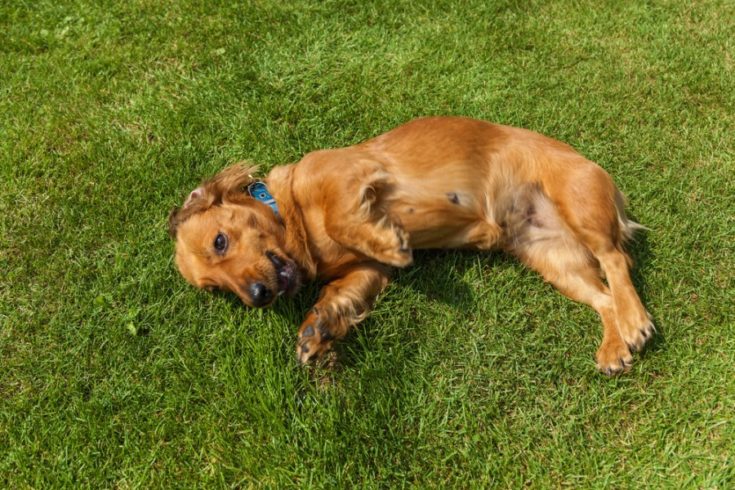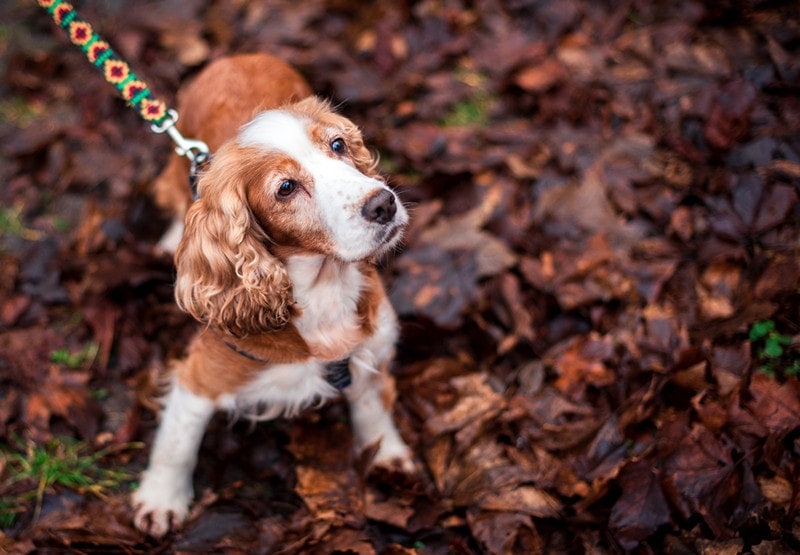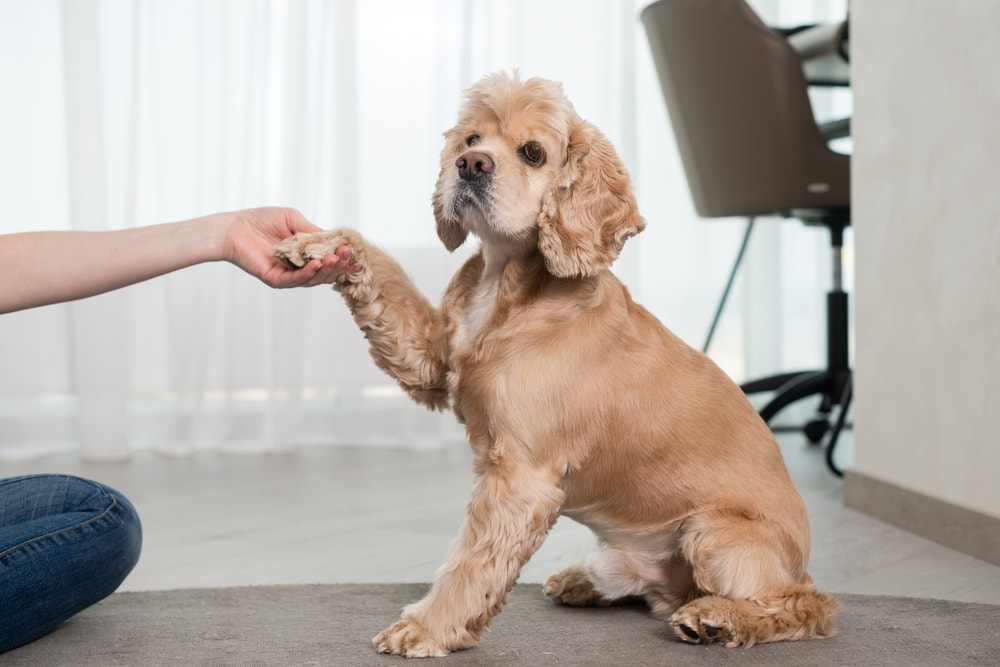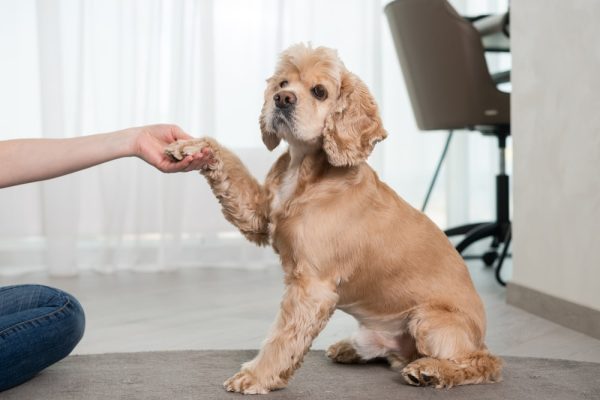Cocker Spaniels are easygoing, cheerful dogs that can make great pets. They’re relatively easy to train, luckily, though they may not be as intelligent as some other dogs. They benefit from training as early as 8 weeks, though you can easily train them when they’re older, too.
You should ensure that your Cocker Spaniel is well socialized on top of being trained in basic obedience. Socialization involves introducing the dog to many different people and places, which prevents them from being fearful later on.
While training a dog from scratch may seem overwhelming, it isn’t actually that hard. Below, we’ll go through the tips and tricks you need to know. For the most part, successfully training a dog is mostly about commitment.
The 7 Tips How to Train a Cocker Spaniel
1. Start Young
You should start training your Cocker Spaniel as soon as you bring them home. Puppies can start training relatively early. Some breeders may even start training the puppies before they’re sent to their new homes.
Puppies are just starting to understand their world and environment. By introducing training at this early stage, you can help ensure that they learn how to behave before bad habits are formed.
There are few downsides to training your puppy early. It may take a bit longer than if you waited due to their short attention spans. However, this is preferable to your canine developing bad habits.
2. Patience
You should be very patient with your Cocker Spaniel. They’re intelligent, but much of that intelligence isn’t aimed at obedience. They’re easily distracted and need to have very short training sessions. Therefore, they may not learn things as fast as other dogs. Don’t push a Cocker Spaniel that is tired and bored of training.
It’s best to integrate commands into daily life as quickly as possible. You want to use the commands when you actually need to use them, as this helps the Cocker Spaniel understand that the command is for everywhere.

3. Keep It Fun
You don’t want to make training a stressful time for your dog. If you do, there’s a good chance that your canine may just decide not to listen to you. You can’t make a dog train—you have to bribe them with treats and fun. Most Cocker Spaniels want to please their own through training. But, if you make the training session stressful, they may start running away at training time.
For this reason, it’s important to avoid harsh punishments and negative reinforcement. Instead, you want to focus on the positive aspects of training. Whenever your dog does something even a little right, it’s important to praise and treat them.
In the beginning, you’ll be using treats a lot. New commands are hard, and it’s important for dogs to be rewarded consistently. However, once your dog knows the command, you can start taking the treats away. Don’t forget about this stage of training, or you may find yourself reliant on treats.
4. Socialize Your Dog
On top of obedience training, you also want to socialize your dog with other people and animals. Most aggression from dogs is the result of fear. The dog gets scared and tries to defend itself—even if they really don’t mean to.
You can minimize fear (and, therefore, aggression) by socializing your dog. Simply put, this involves introducing your dog to lots of new people, places, and animals at a young age. You can socialize an older dog, but it’s much easier to socialize a puppy, as they tend to be more fearless than adults.
You should take your puppy to as many places as possible so that they can meet lots of new people and animals. If you want your dog to be used to a specific type of animal (such as cats or chickens), be sure they’re around them a lot when they are little.
Puppy group classes can be extremely helpful here, as they allow your puppy to interact with other dogs and people in a safe, controlled environment. However, you should socialize your dog outside of training class, too.
- See Also: How Good Is a Cocker Spaniel With Cats?

5. Crate Train Your Dog
You should also crate train your dog, which involves getting them used to a crate. A crate should never be used as punishment. Instead, it should be a safe place your dog can go to get away from anything that’s stressing them. When the dog can escape in this way, aggression due to overwhelm and fear are less common.
You should teach children not to interact with the dog when they’re in the crate. The crate should be big enough for your dog to stand up and turn around. However, you don’t want it too large, or it won’t have its “den-like” appearance.
Start by confining your dog to the crate for short intervals regularly. You can give them special treats and chews to make this a good time—never use the crate as punishment.
6. Potty Train Early
One of the first things you should teach your dog is where to use the bathroom. Cocker Spaniels are smaller dogs, so their bladders are smaller. This means they have to go outside more often, which often makes potty training a bit challenging. Some owners find that teaching the dog to use a pad or potty area inside first and then moving the dog outside later is helpful.
Whatever you choose, start early and be consistent. The best way to housetrain a dog is to take them outside regularly. You want to take them outside and encourage them to use the bathroom before they have an accident. Each accident puts them a step away from potty training, so being proactive and consistent is very important here.
Every time the dog goes outside, praise them and reward them. If the dog has an accident inside, just clean up the spot well. Dogs won’t understand that going potty there is a problem even if you show it to them. In fact, by reinforcing that they used the bathroom inside, you may make potty training more difficult.
7. Don’t Forget About Leash Training
While small puppies are easy to pick up and carry around, you shouldn’t use this as the main means of transporting the puppy. If you do, it can make the dog fearful of the outside world and unable to walk on a leash. You should treat the puppy just like you would an adult dog, leashing them up anytime they’re going into an open area.
Start by getting your dog used to the collar by simply putting it on them. Next, practice wearing the leash inside. Finally, you can walk your dog around outside. Your goal is to get your dog not to pull on the leash. To do so, you’ll need to stop whenever your dog pulls, which may be quite a bit at first. Expect walks to take a long time.


Conclusion
Cocker Spaniels are easier to train than many other dog breeds. However, you still do need to train them correctly and consistently to make progress. Training dogs isn’t difficult once you know how to do it. Sadly, many people just do it “how their parents did,” which ignores the last 50 years of research in the field.
Hopefully, these tips can help you not make common mistakes.
Featured Image Credit: O_Lypa, Shutterstock











